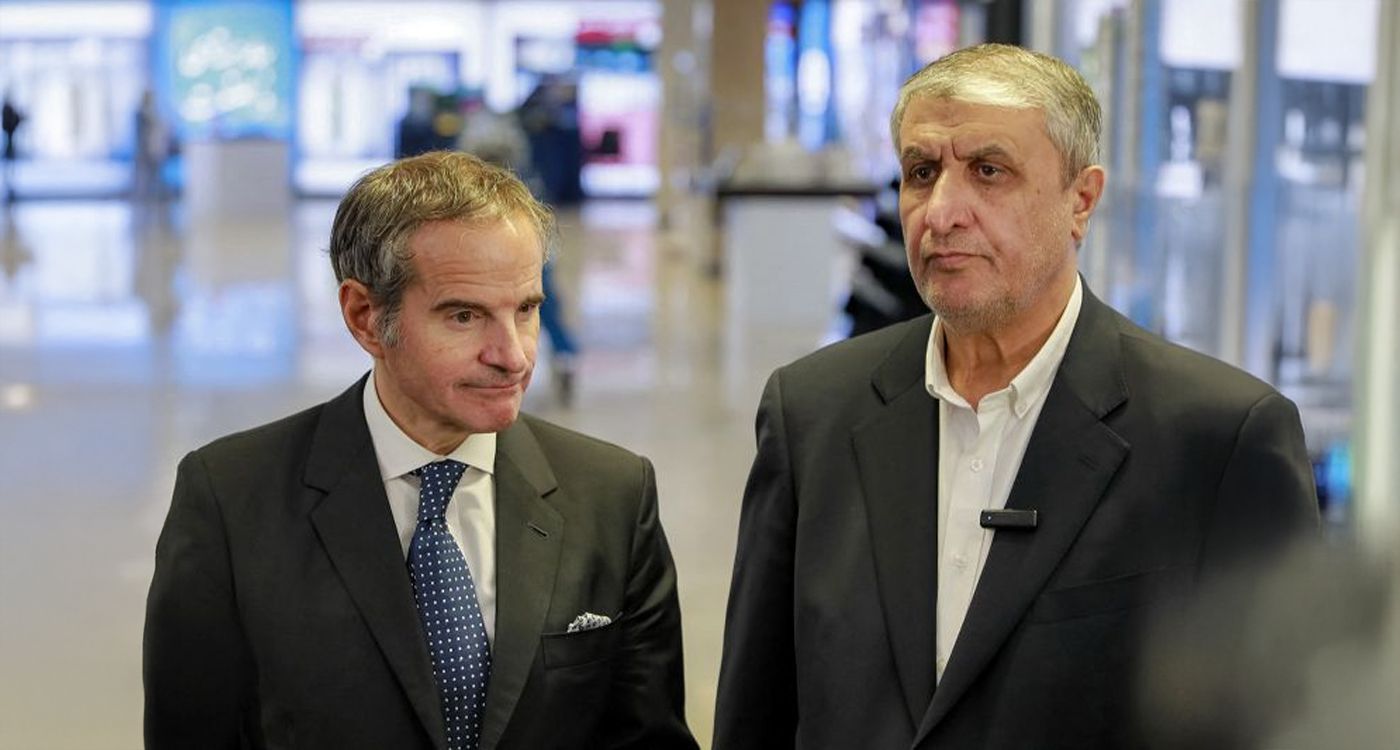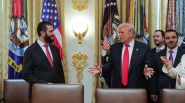- Home
- Middle East
- Iran: Diplomacy on the Edge of Collapse

©Organisation de l'énergie atomique de l'Iran / AFP
Two days before a new round of nuclear negotiations between Iran and the United States is set to begin in Rome, Rafael Grossi, the director of the International Atomic Energy Agency (IAEA), traveled to Tehran in a bid to keep diplomatic channels open and avert further escalation.
Speaking from Tehran on Thursday, April 17, the director of the International Atomic Energy Agency (IAEA), Rafael Grossi, warned that “time is running out” to reach a new agreement on Iran’s nuclear program. His visit comes at a tense moment, with European diplomatic efforts largely sidelined and fears of military confrontation growing.
Grossi held talks with Mohammad Eslami, head of Iran’s Atomic Energy Organization, before meeting with Abbas Araghchi, Iran’s chief diplomat—who was due to travel to Moscow later the same day to deliver a message from Supreme Leader Ali Khamenei to Vladimir Putin. Upon arrival, Grossi reiterated the urgency of the situation, stating that Iran is “not far” from possessing the atomic bomb and calling for an immediate de-escalation.
Tensions around Iran’s nuclear program have indeed intensified since Donald Trump’s return to the White House. His administration has issued a two-month ultimatum to Tehran to renegotiate the nuclear deal, warning that failure to do so may result in military strikes against Iran’s nuclear facilities.
Negotiations in a Minefield
Saturday’s negotiations in Rome, held under Omani mediation, mark the second session in a fragile new phase of diplomacy between Iran and the United States. While Tehran has framed the discussions as “indirect,” Washington appears to be pushing for more direct engagement, aiming to broaden the scope of the talks.
The US administration, under President Trump, is pressing for the inclusion of regional security issues in any renewed agreement—particularly Iran’s support for proxy groups in Lebanon, Syria and Yemen. This expansion of the agenda has been met with strong resistance from Tehran, which insists on maintaining its right to a civilian nuclear program as a non-negotiable red line.
Tensions rose further after Steve Witkoff, Trump’s special envoy to the Middle East, called for a complete shutdown of Iran’s uranium enrichment activities, sparking a strong backlash in Tehran. However, behind closed doors, diplomats are reportedly exploring a possible compromise: a temporary suspension of 60% enrichment levels in exchange for enhanced access for IAEA inspectors.
The geopolitical climate, however, is leaning toward escalation. Since February, the US has bolstered its military posture in the region, including the deployment of B-2 bombers to Diego Garcia, a key base in the Indian Ocean. Meanwhile, the New York Times reports that the US has intervened to dissuade Israel from carrying out a preemptive strike on Iran’s nuclear facilities.
Europe Marginalized, Russia in the Wings
Once a central player in the 2015 Joint Comprehensive Plan of Action (JCPOA), the European Union now finds itself increasingly sidelined in efforts to revive the Iran nuclear deal. The agreement, signed in Vienna, aimed to curtail Tehran’s nuclear ambitions in exchange for phased sanctions relief. Experts and observers criticize the EU’s retreat, pointing to its failure to uphold economic commitments in the face of US sanctions reinstated in 2018. “Neither Iran nor the United States believes the Europeans have a role to play anymore,” summarizes Ali Vaez of the Crisis Group.
Meanwhile, Moscow is positioning itself as an alternative mediator. Iranian diplomat Abbas Araghchi recently underlined the growing strategic alignment between Iran, China and Russia, while Putin may play a backstage guarantor role. In the background, all eyes are on the October 18 deadline–marking the tenth anniversary of the Vienna agreement. If no significant progress is achieved by then, the EU retains the option to activate the “snapback” mechanism, which would automatically reinstate international sanctions on Iran.
Read more




Comments